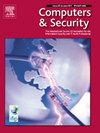MPDroid: A multimodal pre-training Android malware detection method with static and dynamic features
IF 4.8
2区 计算机科学
Q1 COMPUTER SCIENCE, INFORMATION SYSTEMS
引用次数: 0
Abstract
The widespread deployment and open nature of the Android system have led to a rapid increase in Android malware, presenting significant challenges to mobile device security. Both static and dynamic analysis methods exhibit inherent limitations while hybrid detection approaches that combine static and dynamic features struggle with efficiency. To address these issues, this paper proposes MPDroid, a multimodal pre-training enabled detection approach. MPDroid effectively learns the critical characteristics of malicious behavior during the pre-training phase and achieves efficient single-modality detection in the downstream tasks. MPDroid utilizes an API call graph to represent dynamic features and a function call graph for static features. During pre-training, MPDroid employs graph convolutional networks and multimodal fusion techniques to capture the relationships between static and dynamic features. We also address the unimodal bias problem in multimodal tasks through modality alignment and model-level fusion. Furthermore, MPDroid significantly reduces the training and inferencing time for downstream tasks by implementing a multimodal pre-training framework with static features-based downstream tasks, thereby enhancing detection efficiency. Experimental results demonstrate that MPDroid achieves an average accuracy of 98.3% and an F1-score of 97.6%, with less than 7.39 s of detection duration, indicating superior overall performance compared to existing detection methods.
求助全文
约1分钟内获得全文
求助全文
来源期刊

Computers & Security
工程技术-计算机:信息系统
CiteScore
12.40
自引率
7.10%
发文量
365
审稿时长
10.7 months
期刊介绍:
Computers & Security is the most respected technical journal in the IT security field. With its high-profile editorial board and informative regular features and columns, the journal is essential reading for IT security professionals around the world.
Computers & Security provides you with a unique blend of leading edge research and sound practical management advice. It is aimed at the professional involved with computer security, audit, control and data integrity in all sectors - industry, commerce and academia. Recognized worldwide as THE primary source of reference for applied research and technical expertise it is your first step to fully secure systems.
 求助内容:
求助内容: 应助结果提醒方式:
应助结果提醒方式:


